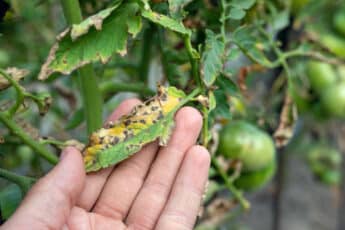Tree branches can fall after a storm, or the trees can bend dangerously. Decades of growth could also cause them to reach places you don’t want them to. Homeowners in these circumstances have to choose between tree removal and expert tree trimming. Choosing the right strategy is critical to keeping your landscape healthy and attractive. This decision can be challenging, as it depends on various factors, including the tree’s health, safety concerns, and the impact on the surrounding area. In this article, we’ll explore when you should prune a tree when removal is the better option, and how to make the best decision for your situation.
When to Prune a Tree
Pruning is a vital aspect of tree care, and it can significantly improve a tree’s health, structure, and appearance. Here are some scenarios where pruning is recommended:
Health Maintenance
Pruning helps maintain a tree’s health by removing dead, diseased, or damaged branches. This prevents the spread of disease and decay to other parts of the tree and encourages the growth of healthy branches.
Safety Concerns
Overgrown or weakened branches can pose a safety risk, especially during storms or high winds. Pruning these branches can prevent them from falling and causing injury or property damage.
Improving Tree Structure
Pruning can correct structural issues in young trees, such as weak branch attachments or unbalanced growth. This helps the tree develop a strong and stable structure, reducing the likelihood of future problems.
Enhancing Aesthetics
Pruning can improve a tree’s appearance by shaping it and removing unsightly branches. This is especially important for ornamental trees in landscaped areas.
Increasing Sunlight and Airflow
Removing excess branches can increase sunlight penetration and airflow through the canopy, benefiting the tree’s overall health and promoting a healthier ecosystem in the surrounding area.
When is the appropriate season to prune trees?
If you have decided that pruning a tree is significantly preferable to cutting it down, you need to know the optimal season. However, this can vary depending on the type of tree you have.
Since trees do not produce new growth during the winter, this is usually a great time to prune them. Pruning in the summer can help you identify problem branches and slow unwanted growth. Fall is generally less ideal, as trees can fall victim to airborne fungus and slowly recover. If you decide to prune in the spring, wait until the flowers lose their structure or color.
When to Remove a Tree
While pruning can address many issues, there are situations where tree removal is the best or only option. Here are some scenarios where tree removal is recommended:
The Tree is Dead or Dying
A dead or dying tree poses a significant safety risk, as it can fall without warning. If a tree shows signs of decline, such as excessive leaf drop, peeling bark, or fungal growth at the base, it may be time to consider removal.
The Tree is Hazardous
If a tree is leaning dangerously, has large dead branches, or is located near power lines, removal may be necessary to prevent accidents or damage. Trees with extensive root damage that could cause them to topple should also be removed.
Severe Disease or Pest Infestation
Sometimes, a tree may be so severely affected by disease or pests that treatment is no longer effective. Removing the tree can prevent the problem from spreading to nearby trees.
The Tree is Damaging the Property
Trees with invasive root systems can cause significant damage to foundations, driveways, and underground utilities. If pruning won’t resolve these issues, removal may be the best solution.
The Tree is Crowding Other Plants
If a tree is overshadowing other plants or taking up too much space in a garden, removing it can give other plants a better chance to thrive. This is particularly important in small gardens where space is limited.
The Tree Doesn’t Fit the Landscape
Sometimes, a tree doesn’t fit the landscape design or obstructs views. In these cases, removal may be necessary to achieve the desired aesthetic.
How to Make the Decision
Deciding whether to prune or remove a tree requires careful consideration of several factors:
- Tree Health: Assess the tree’s overall health. Pruning is often the best choice if it’s healthy but has some problem areas. If the tree is in severe decline, removal may be necessary.
- Safety Risks: Consider the potential risks the tree poses. If it’s a significant hazard, removal is likely the safer option.
- Environmental Impact: Consider the tree’s role in the local ecosystem. Trees provide habitat for wildlife and contribute to the environment’s overall health. If the tree is healthy, removal should be a last resort.
- Cost: Pruning is generally less expensive than removal, but repeated pruning over time can add up. Weigh the long-term costs of each option.
- Personal Preferences: Your preferences and landscape goals should also influence your decision. If the tree doesn’t fit your vision for your property, removal might be the right choice.
Determining whether to prune or remove a tree largely depends on where it is on your property and how much damage has occurred to the tree. Our staff at Greenwood Tree Company is ready to help if you are thinking about trimming or removing any trees on your property! Please contact us by phone or by filling out our online form!
We look forward to speaking with you and helping you with tree trimming and removal needs!







